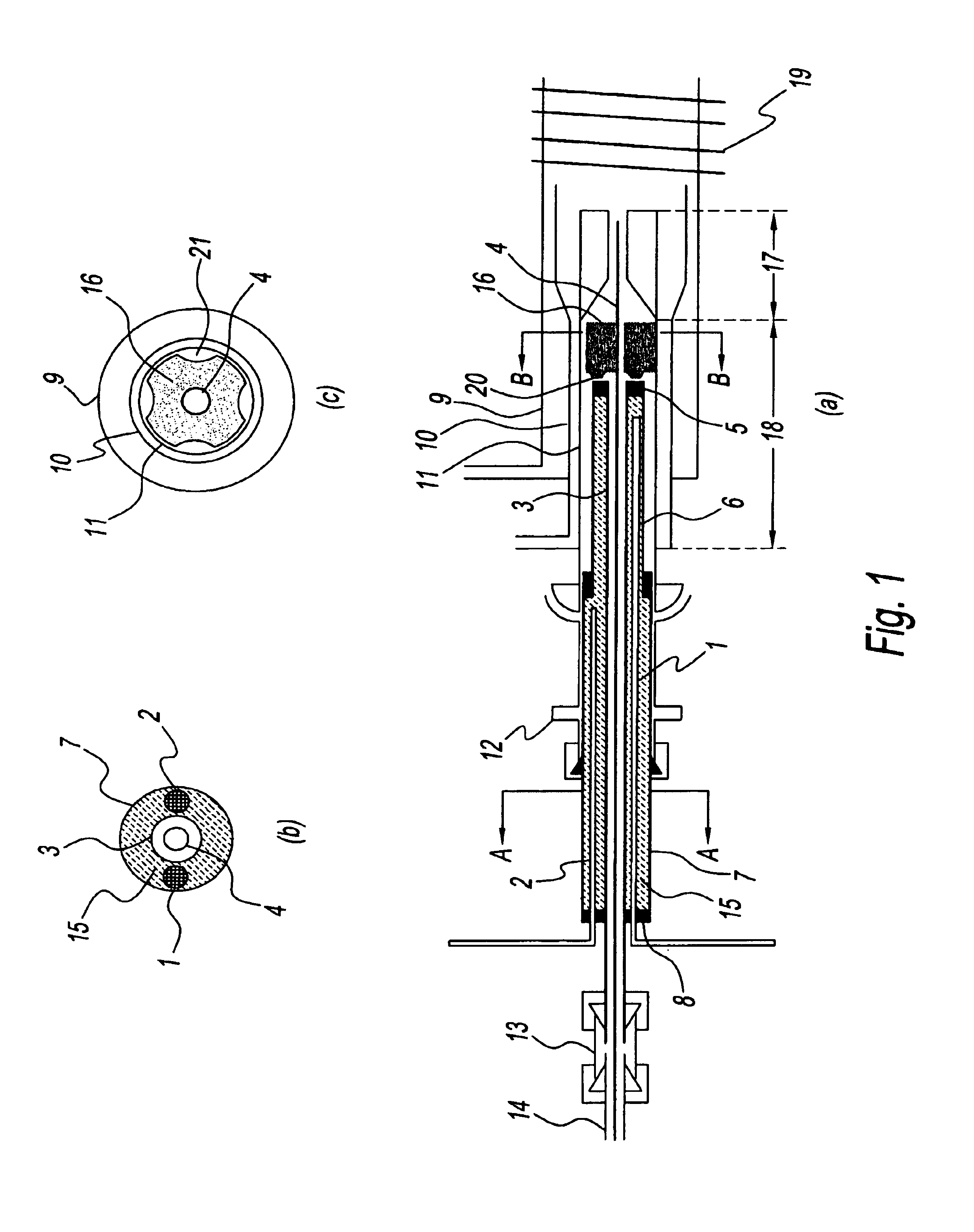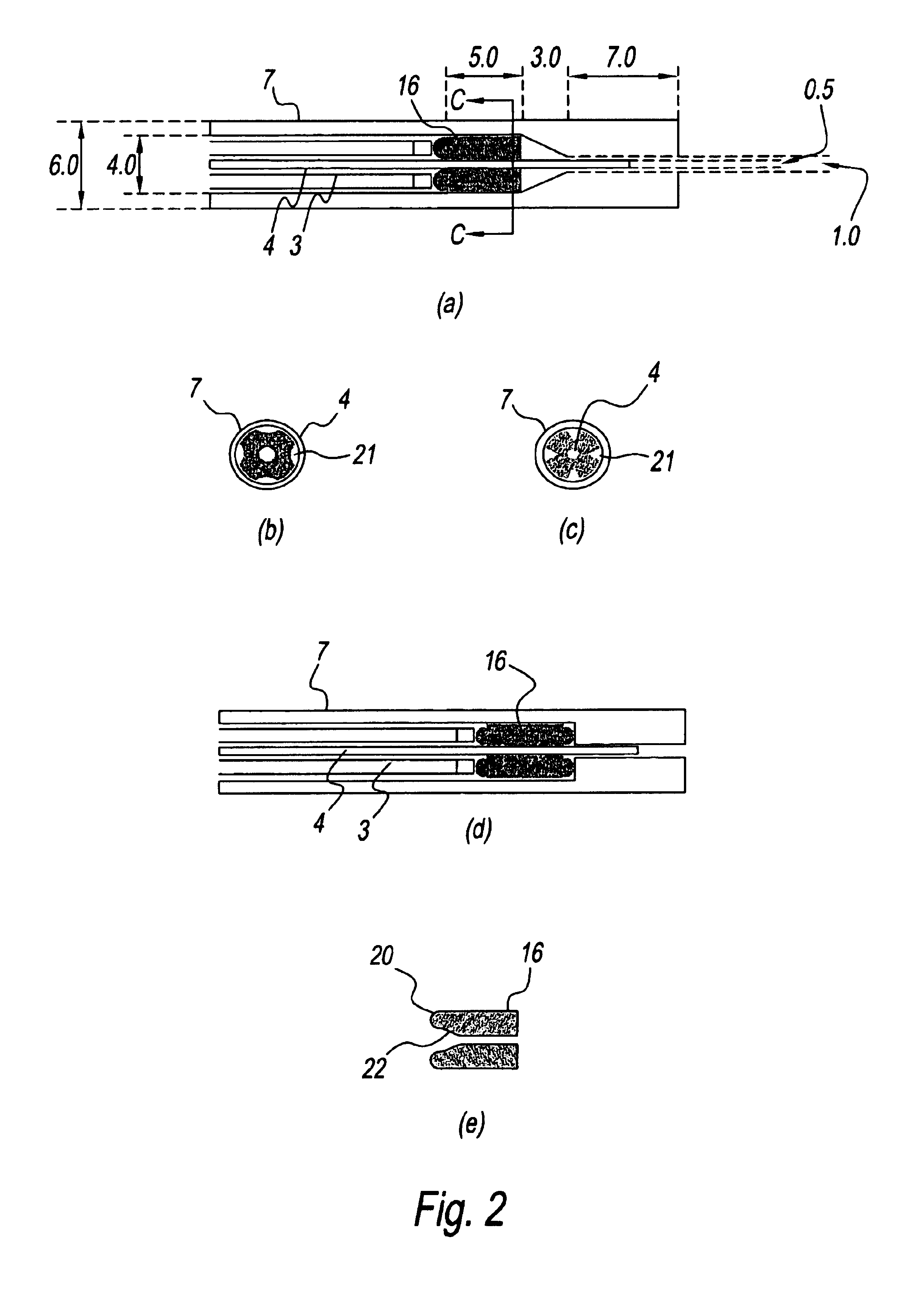Inductively-coupled plasma torch
a plasma torch and inductive coupling technology, which is applied in the direction of particle separator tube details, instruments, manufacturing tools, etc., can solve the problems of deteriorating the degree of separation of the compound separated by the gas chromatograph, the inability to analyze the high-boiling point compound, and the risk of electric shock, so as to achieve smooth conveying of make-up gas
- Summary
- Abstract
- Description
- Claims
- Application Information
AI Technical Summary
Benefits of technology
Problems solved by technology
Method used
Image
Examples
embodiments
[0058]Furthermore, the present invention will be described in more detail with a more specific embodiment. In this embodiment, as a capillary tube 4 for introducing gaseous molecules, for example, a silica capillary tube used for a gas chromatograph is used, the inner surface of which is inactivated and which has an inner diameter of 0.32 mm and an outer diameter of about 0.5 mm, while a capillary tube made of other material or having other inner diameter or outer diameter may be used if it has high heat resistance and its inner surface is inactivated. And, as a metallic make-up gas tube 3, e.g., a stainless steel tube having an outer diameter of 1.59 mm and an inner diameter of 1.00 mm is used, while a stainless steel tube having a size close to this may be used. One end of the metallic tube 3 is connected to the metallic tube 14 extending from a high-temperature source by a connector 13. As a matter of course, this connecting portion is heated and thermally homogenized by a well-k...
PUM
| Property | Measurement | Unit |
|---|---|---|
| inner diameter | aaaaa | aaaaa |
| temperature | aaaaa | aaaaa |
| length | aaaaa | aaaaa |
Abstract
Description
Claims
Application Information
 Login to View More
Login to View More - R&D
- Intellectual Property
- Life Sciences
- Materials
- Tech Scout
- Unparalleled Data Quality
- Higher Quality Content
- 60% Fewer Hallucinations
Browse by: Latest US Patents, China's latest patents, Technical Efficacy Thesaurus, Application Domain, Technology Topic, Popular Technical Reports.
© 2025 PatSnap. All rights reserved.Legal|Privacy policy|Modern Slavery Act Transparency Statement|Sitemap|About US| Contact US: help@patsnap.com



